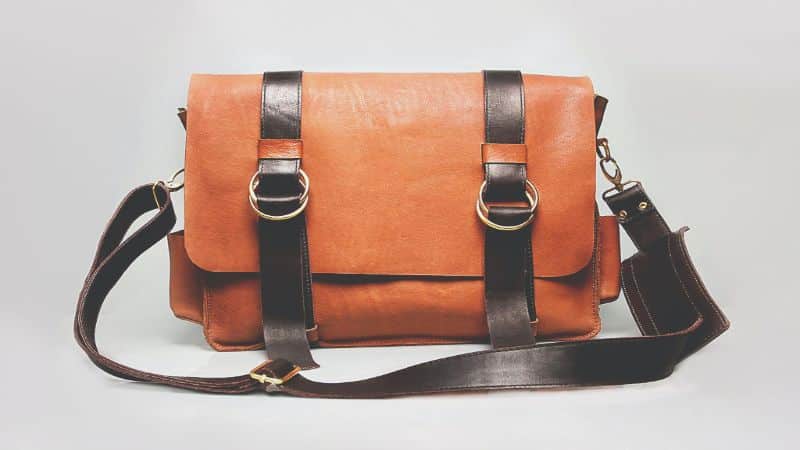Oh no, your favorite handbag’s strap has just given up the ghost, right in the middle of your busy day. But don’t let a broken strap break your style or your stride. With a few simple tools and some DIY magic, you’ll have that beloved bag slung over your shoulder again in no time.
Assess the Damage
When your handbag strap has given up the ghost, you need to take a good look before taking action. Start by examining the strap. Is it a clean break or a frayed mess? How it’s broken affects how you’ll go about the repair.
Next, check the hardware. If it’s a metal clasp or loop that’s failed, is it bent or snapped? Metal hardware can often be bent back into shape with pliers, but if it’s broken, you’ll need a replacement.
For leather straps, look for signs of wear and tear. If the leather’s merely cracked, you may simply need some leather conditioner. However, tears or holes will call for more complex solutions.
Don’t forget to inspect the area of the bag where the strap attaches. Is the anchor point intact, or is there damage there too? If the main body of the bag is compromised, this may complicate your repair job.
Be mindful of the material of your bag too. Different fabrics might need unique approaches. Delicate materials will need a gentler touch, while sturdier fabrics can handle more rigorous methods.
After a thorough assessment, you’ll have a clearer picture of the road to recovery for your handbag strap. Keep this intel at the ready—your next steps will depend on it.
Gather the Tools and Materials
Before you dive into the repair, make sure you have all the necessary tools and materials. A well-prepped workspace streamlines the process and ensures you don’t have to pause mid-repair to hunt for a missing item. Here’s what you’ll need:
- Needle: Opt for a heavy-duty one. This isn’t a job for your standard sewing needle.
- Thread: Matching the color and thickness of your original strap’s thread is crucial.
- Scissors: Sharp ones. You’ll make clean cuts without fraying the material.
- Leather punch: Only if you’re dealing with a leather strap. It’ll make adding holes a breeze.
- Rivet gun or sewing machine: Depending on the strap’s attachment method.
- Replacement hardware: If the original clasps or buckles are damaged.
If you’re working on a leather strap, you might also need leather adhesive. For fabric straps, fabric glue can be a lifesaver. In both cases, ensure the glue is specifically designed for the material to avoid further damage.
Always do a test run when it comes to tools, especially if you’re using something for the first time. Practicing on scrap material avoids costly mistakes on your actual handbag. Replace worn tools; dull tools can ruin your repair job. You wouldn’t want to do more harm than good.
Remember, quality matters. Investing in high-grade tools and materials can mean the difference between a temporary fix and a long-lasting repair. Don’t skimp if you want your handbag to withstand the test of time. After all, a well-maintained handbag is a testament to your impeccable style and attention to detail.
Choose the Right Repair Method
Once your tools and materials are laid out, you’ll need to choose the most suitable repair method. Leather straps and fabric straps have different needs, so identify your bag’s material first. For a leather strap that’s come apart, you might opt for stitching with a heavy-duty needle and thread. Make sure you have a leather punch to make neat holes for stitching, ensuring a professional finish.
Is your strap attached with hardware? If so, you’ll likely need a rivet gun to secure new rivets. Selecting the correct size and color of the rivet is critical – they should match your handbag’s existing hardware for a cohesive look. Alternatively, if sewing is the method of choice, and the material allows, use a sewing machine for stronger seams. High-tension areas, like where the strap meets the bag, demand durable stitching.
For frayed fabric straps, fabric glue could be the answer. It’s a quick fix and works well for minor damage. Apply it carefully to avoid stiffening the strap unnecessarily. If the damage is extensive, replacing the entire strap might be the most effective method. You can either order a matching replacement from the handbag’s manufacturer or, for a custom touch, choose a contrasting strap to give your bag a new lease on life.
Remember: each repair method should be tested on a discrete area first. Precision and patience here are key to a repair that is both aesthetically pleasing and functional. Practice makes perfect, so don’t rush the process. Your handbag’s longevity depends on the care you put into this repair.
Stitching the Strap
When you’re ready to stitch a leather strap, precision is key. Start by aligning the broken edges neatly. If they’re jagged, trim them slightly with your sharp scissors to create a smooth surface for reattachment. Choose a heavy-duty needle and thread that matches your strap’s color to ensure the repair is less noticeable.
Threading your needle, double the thread for extra strength and tie a solid knot at the end. Begin stitching from the underside of the strap to hide the knot. Use a saddle or cross-stitch for durability. The stitch should be tight and even throughout to maintain the strap’s strength.
If you’re handling a fabric strap, it may be tempting to simply sew over the frayed edges, but reinforce the area first. You can apply fabric glue to the frayed edges and press them flat before you start sewing. Then, like with leather, use a robust thread and needle. Stitch as close to the original seam as possible. This maintains the strap’s original contour and strength.
For straps requiring holes, use a leather punch carefully to create uniform and clean holes. Space the holes evenly at consistent intervals along the area that needs to be stitched. Once the holes are in place, sew using a method that securely weaves the thread through the strap and maintains its flat position.
« How to Repair Handbag Edges: Revive Your Purse Like a Pro
How to Organize Handbags Easily: Declutter & Streamline Your Essentials »
Always pull each stitch tight as loose stitches can compromise the repair and lead to more damage. You’ll know you’re done stitching when the strap feels sturdy and looks cohesive. Don’t forget to secure the thread with a strong knot on the underside of the strap and trim any excess thread.
Remember, practice makes perfect. If you’re new to stitching, consider practicing on an old piece of fabric or leather to get the hang of it before you tackle your handbag strap. This attention to detail in your workmanship can restore your handbag to its former glory and extend its lifespan significantly.
Replacing the Strap
Sometimes stitching won’t cut it, and the only option is to replace the strap entirely. If you’ve found yourself in that bind, don’t worry; strap replacement can be straightforward with the right approach and materials.
First, find a compatible strap that matches or complements your handbag. You’ll want to consider both style and function. The strap should have similar width and length as the original unless you’re aiming for a deliberate change. For designer bags, check if the brand sells replacement straps; this will ensure the look and quality remain consistent.
When selecting a new strap:
- Verify the color matches or coordinates with your bag.
- Choose a material that offers durability.
- Check the hardware such as clasps or buckles for compatibility.
Once you’ve got the perfect match, it’s time to attach it. If your strap has clasps, attaching it should be as simple as clipping it onto the existing hardware. Ensure that the clasps are securely fastened to avoid the strap detaching unexpectedly.
For handbags with sewn-in straps, you might need basic sewing skills. Carefully remove the remaining pieces of the original strap by undoing the stitches. You can use a seam ripper for this. Align the new strap and hand-stitch or use a sewing machine to secure it in place. Use a thread that matches the bag’s color to keep the repair discreet.
If you’re not confident in your sewing ability, a local tailor or shoe repair shop can often do this for you for a small fee. They’ll have the expertise to ensure that the strap is attached firmly, which can extend the life of your handbag significantly.
Remember, while you can take the DIY route, professional help can save you time and give you peace of mind, especially with expensive or sentimental items.
Conclusion
With your newfound knowledge, you’re now equipped to tackle that handbag strap repair. Whether you’ve stitched it back to strength or opted for a fresh replacement, your favorite accessory is ready to hit the streets again. Remember, if the task seems daunting, there’s no shame in turning to a pro. Your handbag’s been with you through thick and thin—it deserves to look and function at its best. Happy repairing!
Frequently Asked Questions
How can I assess the damage to my broken handbag strap?
To assess the damage, carefully examine the strap for tears, breaks, and wear. Check both the leather/fabric and the stitching as well as any hardware attachments.
What should I look for in the hardware of my handbag strap?
Inspect for any signs of wear or damage, such as rust on metal parts or cracks in plastic components. Ensure that clasps and loops are functioning correctly.
Is it possible to stitch a broken handbag strap myself?
Yes, you can stitch a broken handbag strap if the tear is minor and you have the appropriate needle and thread. Use strong, durable thread for the best results.
When should I consider replacing my handbag strap instead of repairing it?
Consider replacing the strap if it is extensively damaged, if the original material is weak, or if you prefer a new look.
How do I choose a compatible replacement strap for my handbag?
Select a strap that matches the color, width, and style of your handbag. Ensure that the hardware is compatible with your bag’s attachment points.
Can I attach a new handbag strap by myself?
Yes, you can attach a new strap yourself if it has simple clasps or hooks that fit your bag’s existing attachment points. Follow the manufacturer’s instructions for best results.
When is it advisable to seek professional help for a broken handbag strap?
Seek professional help if the damage is severe, the repair process is complex, or if special tools are required that you do not have access to.











